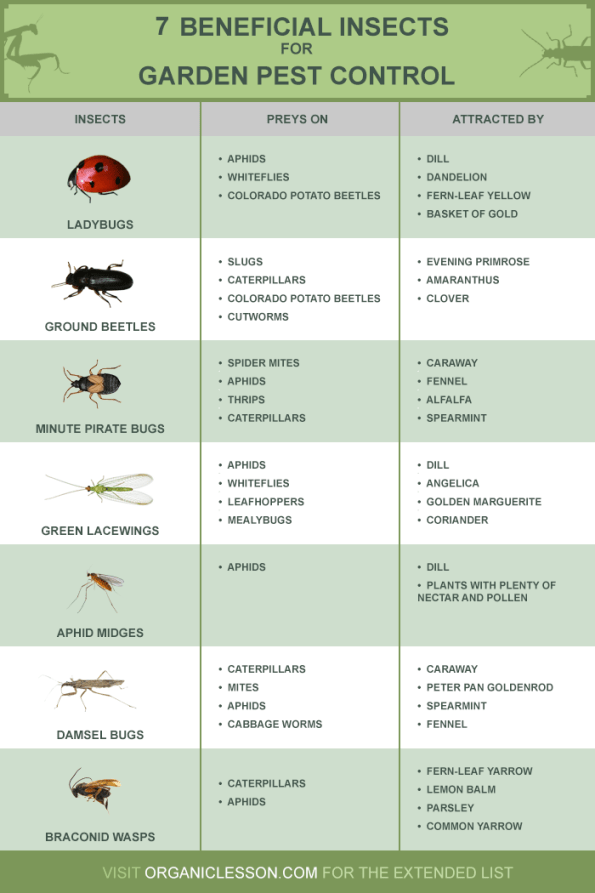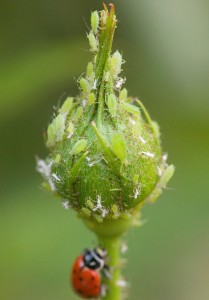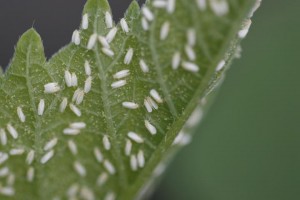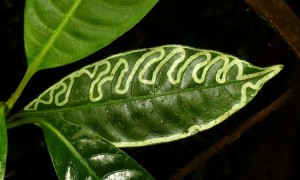It’s prime gardening and plant season, and there is nothing worse than insects and pests invading your beautiful plants. We invest so much time, money, and love into our gardens and plants, and it feels defeating to find insects and pests destroying your beautiful work. I already had a bout with aphids this growing season that had me debating if it was just easier to move. Lost with how to eradicate them and keep my plants, I did some research online and then talked with professionals at one of my favorite local greenhouses. Now, I have some helpful tips to share. Let’s talk about preventative measures for insects and pests, the most common insects and pests that can attack your outdoor and indoor plants, and what to do about them if you find them. It’s OK; I didn’t move, and you don’t have to, either.
Preventative Measures for Insects
- Be hands-on with your plants. Check the undersides of leaves for insects, pests, and their eggs (they’re tiny!). Look for leaves with holes, odd curling, damage, sticky substances, and/or yellowing.
- Make sure your plants are spaced far enough apart for proper air flow to prevent molds and fungus. Dying and diseased plants attract insects and pests.
- Remove dead plants.
- If you’re using pots or containers, make sure they’re clean prior to potting. I think we all know, but you definitely need drainage holes in containers.
- Use good soil. My favorite is FoxFarm Ocean Forest, but there are many quality soils.
- Feed/fertilize your plants; keep them strong and healthy.
- Don’t overwater. No one likes a wet bottom. (Overwatering promotes root root and fungus.)
- Employ plants that repel insects and pests. Basil, mint, garlic, parsley, lavender, marigolds, dill, and catnip all do their part. (Fair warning: it was my dill and parsley that had aphids, so perhaps that memo hasn’t made it yet to those guys.)
- Employ plants that attract beneficial insects. A fun thing I learned at my local greenhouse is that plants that attract butterflies also attract ladybugs. We want ladybugs. They may look cute, but they’re actually crafty beasts that will eat the harmful insects. I now have young butterfly bushes and Alyssum; I was growing Coneflowers, Zinnias, and Cosmos from seed, not knowing they also attract butterflies and other benefiicial insects.
Here’s a handy list of more beneficial insects:

Helpful insect identifer chart from Organic Lesson
Common Plant Insects and Pests
Aphids are small, soft-bodied insects that suck the nutrient-rich liquids out of plants. They come in multiple colors (greens, yellows, greys), and can even be white and fuzzy. They multiply quickly and need to be controlled immediately. Tip: you might notice ants before you notice the aphids. Aphids leave a residue called honeydew while chomping your greenery, and ants love honeydew. When touching your plants, you will feel the sticky remnants of this substance (I now refer to it as “aphid drool”).

Aphids and a heroic ladybug at their version of a buffet
Scale looks like tiny clusters of brown bumps and you’ll find them on the leaves (undersides mostly, around veining) and stems. They also eat plant sap, taking the plant’s nutrients. Some types of scale will also leave the telltale honeydew; others, like mealybugs, will not. They’re tricksters like that, but they’re also lazy and don’t move much. Tip: if you can scrape it off with your fingernail, it’s likely scale. You’ll see leaf damage, rotting, and possible fungus.

Scale on a leaf
Whiteflies also eat plant sap and leave honeydew. Tip: look for ants and/or stickiness. They like new plant growth (the sheer audacity…), and tend to hang out on the undersides of leaves. As their name suggests, they are white flies, but they are super tiny. I think they look like miniature grains of white rice. If you disturb them, they will fly. You may also see egg clusters on the undersides of leaves. Adult females can lay up to 400 pale yellow eggs, so don’t wait to take of this problem.

Whiteflies look like tiny rice grains
Leaf Miners is a generic term for insect larvae that live inside of and eat the plant leaves (examples: sawflies, some beetles, some flies, and some moths). It’s fairly obvious if you have a problem because your leaves will have paths of whiteness, like squiggles or blotches, from lack of chlorophyll. The larvae are almost impossible to see because they are inside the leaf layers. My greenhouse expert also shared with me that Leaf Miners leave their feces inside the leaf layers. Disgusting, but the more you know, right?

Leaf miners and the tell-tale trailing
Treatments Options for Insects and Pests
Some plants are more delicate than others, so please check on how to best treat that particular plant before proceeding.
- If you can isolate the infected plant, do that. Most insects and pests spread quickly between plants.
- Hose down your plant with a forceful stream. This will help remove bugs.
- Wash plants with a mild, soapy water. Get every leaf. (A few drops of Dawn or Dr. Bronner’s in water will do.)
- Remove egg sacs, eggs, cocoons, all visible insects and pests, and webbing with cotton swabs dipped in isopropyl alcohol.
- Clean and sanitize the area and/or container. Spray surfaces with isopropyl or another safe sanitizer.
- Use a pesticide. Please check the product label if it is appropriate for that plant. Tip: spray pesticides when it’s not sunny or windy. (Trust me on the wind; my aphid battle got ugly when the wind blew the spray back at me.) Repeat as directed on bottle.
- Use an organic pesticide (examples: rubbing alcohol wiped on leaves, diatomaceous earth around plants and on the soil, and using insecticidal treatments like Neem oil). About Neem, I don’t like it because it can burn leaves, but many, many people love it. Tip: never spray Neem on plants in the sun (it will burn leaves), and wipe the leaves down after a few minutes. If your leaves are still super shiny, Neem oil is still there.
I wish you all happy and healthy gardens and plants this season, and that you never need to employ any of these pest-eradicating tactics. But if you do, this should get your started. And if you have tips for plant and garden insect and pest control, please leave a comment and let me know!

0